Best
microphone for guitar
-
Overall: Best for guitars
-
Best Feature: Frequency boost at 6 kHz
-
TedScore™: 9/10
Best
overall
-
Overall: Best for vocals, producers, and podcasters
-
Best Feature: The best high-end sound for crystal clear recordings.
-
TedScore™: 10/10
Best
microphone for vocals
-
Overall: Best option for vocals, podcasters, and producers
-
Best Feature: It comes with a detachable windscreen
-
TedScore™: 9/10
Feeling swamped by all the microphone choices? Let’s explore options like dynamic, condenser, and ribbon mics.
From condenser to dynamic microphones, find popular brands like Shure, Audio-Technica, and Rode on this comprehensive list. Each type has unique qualities that can transform your audio from ordinary to exceptional.
Exploring the world of microphones can seem daunting, but by the end of this article, you’ll be confident in choosing the perfect microphone, whether for singing, podcasting, or capturing delicate musical nuances. So, grab your favorite headphones, and let’s find that ideal mic for you!
Different types of microphones explained
The three primary different types of microphones are dynamic, condenser, and ribbon.
- Dynamic microphones are robust and versatile, often used for live performances and recording louder sound sources.
- Condenser microphones are known for their detailed and transparent sound, making them suitable for studio recording and capturing delicate nuances.
- Ribbon microphones are valued for their warm and natural sound and are often used to record vocals, strings, and brass instruments.
Let’s examine more each type and what it is best for.
Dynamic microphones
Dynamic microphones are commonly used during live performances. This is the type of microphone to use when you want to reduce and control ambient noise from the sound you would like to record.
Hence, you can come across these types of microphones in a radio studio, on podcasts, and on music stages.
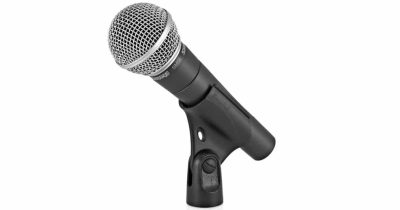
How dynamic microphones work
Known as moving coil microphones, dynamic mics work in the following way; the diaphragm of the microphone is attached to the coil wire that shifts forward and backwards due to sound vibrations, causing the coil to move around the magnet, making a voltage and converting sound waves into an audio signal.
They essentially operate in the same principle as speakers but in reverse!
Dynamic microphones specifications
Dynamic mics are sturdy compared to other microphone types and can be used as your kick mic (for drums – not actual kicking!). They feature omnidirectional and cardioid polar patterns, so the mics pick up sound from the direction you point in.
A dynamic microphone can withstand massive sound pressure levels and pick up loud noises, making it suitable for tracking drums, vocals and guitars. As cardioid mics, dynamic mics cancel any sound waves coming from behind.
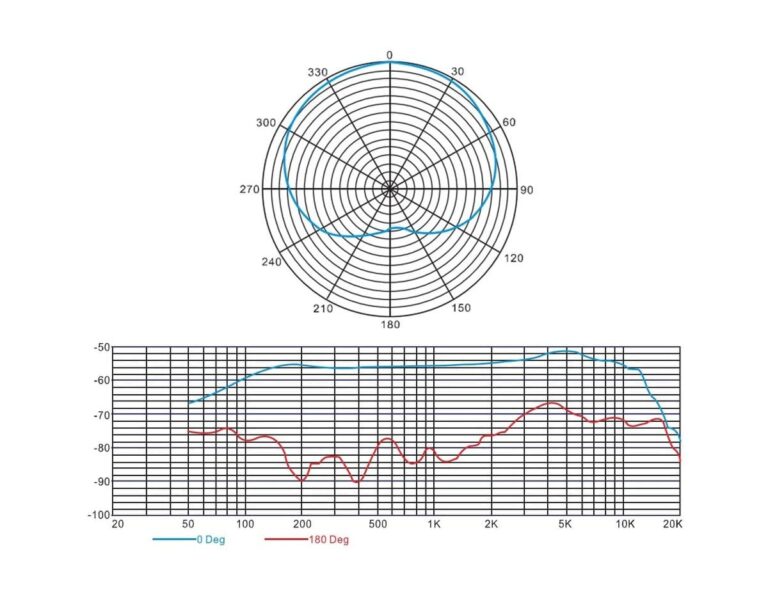
Such dynamic mics make an ideal vocal microphone as they give the voice a lot of amplitude and presence. Unlike condenser microphones, dynamic microphones are relatively heavy and less likely to distort and overload when they capture high SPL (sound pressure level) sources than sensitive microphones.
Condenser microphones
Condenser microphones are commonly used mics in recording studios.
They are sophisticated mics but more fragile than other types of microphones. The condenser microphones are balanced and provide detailed sound.
Therefore, they are intended for softer sound sources.
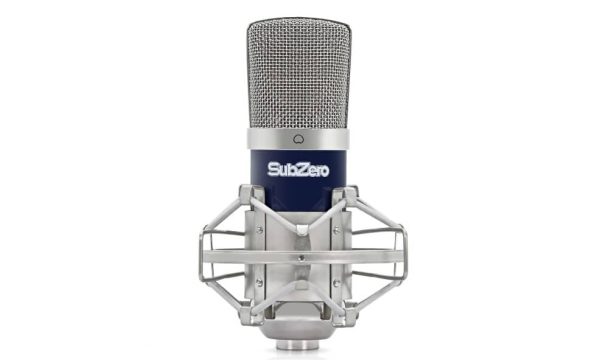
How condenser microphones work
The condenser microphones, also known as capacitor mics, have a diaphragm that stores electrical capacity. A condenser microphone picks up sound by vibrating the diaphragm and producing a recordable audio signal. Compared to a dynamic mic, this mic uses capacitance instead of moving coils which is why it produces a more detailed sound.
Condenser mics specifications
Most condenser microphones require an external power source for charging. Their charge, known as phantom power, usually comes from a mixer and an audio interface. The condenser microphones require phantom power of +48 V. However, some active microphones are tube-powered and have their specific power supply.
The condenser microphone is more sensitive than the dynamic microphone, so it is a good choice for recording vocals and instruments.
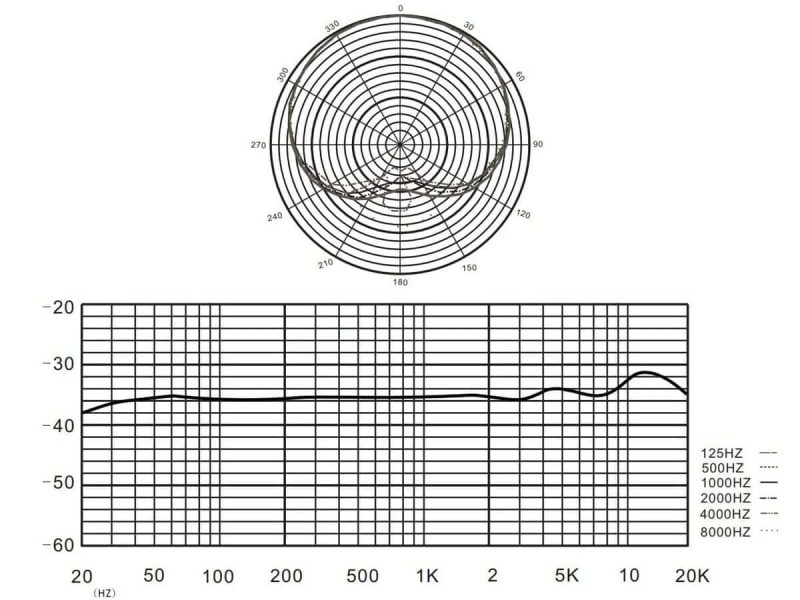
The condenser microphones offer the best high-frequency audio reproduction from the other microphone types.
Microphone type
Condenser microphones fall into two categories: large diaphragm condenser microphones and small diaphragm condensers.
Small diaphragm condenser mics
The small diaphragm condensers are often called pencil mics and have an amazing transient response. The small diaphragm condensers are a good choice for recording acoustic instruments and other music recording situations.
Such small diaphragm microphones have a great high-end response and are intended for recording instruments compared to the large diaphragm condensers microphones used for recording vocals and an acoustic guitar.
Ribbon microphones
The ribbon microphones produce a warm sound and capture high sound notes without harshness. These mics were frequently used on horns.
The ribbon mics are often used in the studio due to their warmth and tone and can be used for vocals and drum overheads.
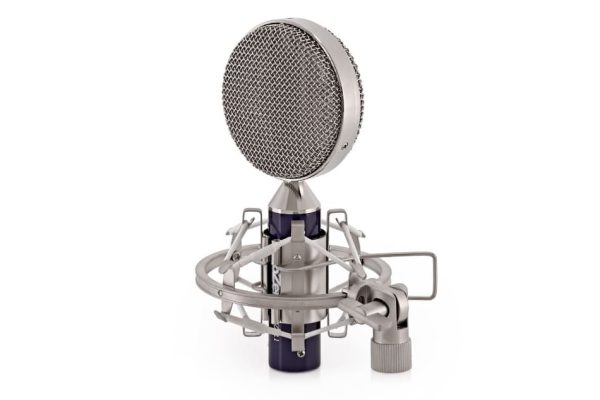
How Ribbon Microphones Works
As the name suggests, the ribbon microphones use a thin metal ribbon that connects to the microphone’s output. Within the ribbon’s design, the mic is a rectangular diaphragm made with aluminium and magnets on the side. Once the sound wave hits the mic, the diaphragm vibrates and makes an electrical charge. Most ribbon microphones have a bi-directional polar pattern.
Ribbon Microphone specifications
The ribbon mics provide natural sound reproduction. They make the vocals and the instruments sound very clear, meaning they can be used in a recording studio. The ribbon mic is also more delicate and often expensive than the dynamic and condenser mic.
The ribbon mics are ideal for taming harsh high-end sources like guitar amps and drum overheads. Such a ribbon mic is bidirectional and provides an authentic warm, vintage and original sound.
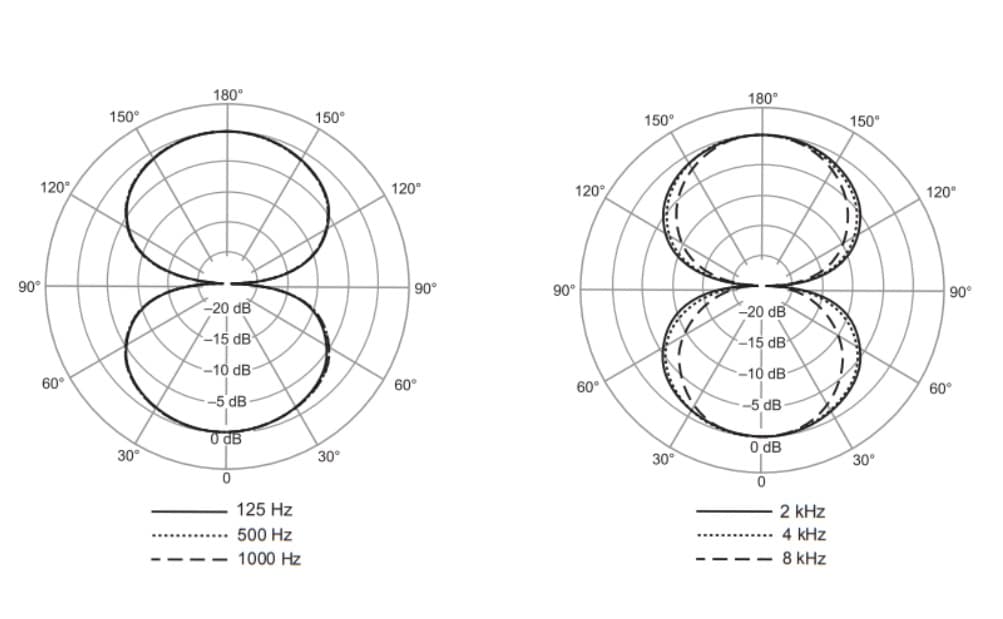
However, you shouldn’t supply ribbon mics with a phantom power of 48V due to the risk of electrocuting it.
Microphone polar patterns
The polar patterns show how microphones pick up sound waves and how sensitive the mic is around the diaphragm. The most common sound pick-up patterns are cardioid, hyper-cardioid, omnidirectional, bi-directional, shotgun and switchable/multi-pattern microphones.

Cardioid microphones
The cardioid pattern got its name as it resembles a heart. It is the most sensitive at 0° on the axis. Hence, the cardioid mics capture the sound in front and block any other sounds. The cardioid polar pattern is present in a dynamic microphone and the condenser microphone. The cardioid microphone is the perfect microphone to use in live performances and for loud instruments such as a drum kit.
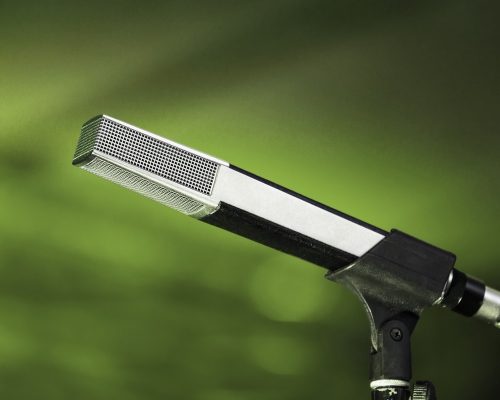
Super/Hyper cardioid microphones
These mics are also front-directional but have a more narrow area of sensitivity than cardioid mics. Given they have the ability to reject noise, you can use these types of microphones for loud sound sources and in noisy environments.
Omnidirectional microphones
The omnidirectional microphones capture the sound waves from anywhere in the room in relation to the microphone. You can use the omnidirectional microphone in a studio and venues with good acoustics, as well as for a live recording. However, their downside is that they don’t reject background noise which makes them unsuitable for busy venues.
Bi-Directional microphones (Figure 8)
This is the polar pattern of the ribbon microphone. Its name suggests that such a mic is sensitive at both 0° as it is at 180°. Figure 8 mics capture the sound from the front and the back while rejecting the sound from the sides. This makes the bidirectional microphones perfect for stereo recording. The Figure 8 polar pattern is also commonly used on large diaphragm condensers.
Shotgun microphones
The shotgun mics are more directional than hyper-cardioid ones. The shotgun microphone eliminates sounds from the sides. They are typically used for film and theatre but are also overhead mics used for singing groups. A shotgun mic is also known as a line and gradient microphone.
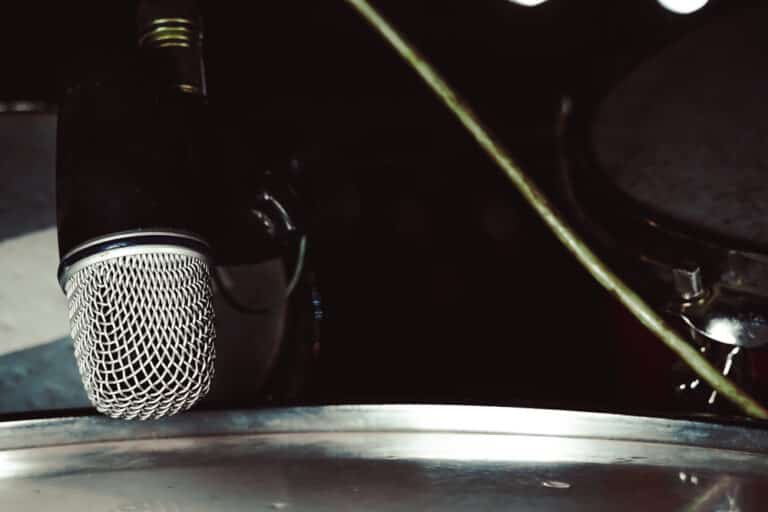
Switchable/Multi-pattern microphones
These types of microphones switch between polar patterns and are very versatile. Most condenser USB microphones have this feature, activated simply by flicking a switch. You can use them in various situations, but you have to be careful, as you don’t want to damage the parts, which gives them versatility.
Diaphragm sizes
Mics pick up sound through the diaphragm, a thin membrane that vibrates once it comes into contact with the sound. That said, the diaphragm size affects the level at which the mic handles sound pressure, sensitivity, dynamic range, noise level etc.
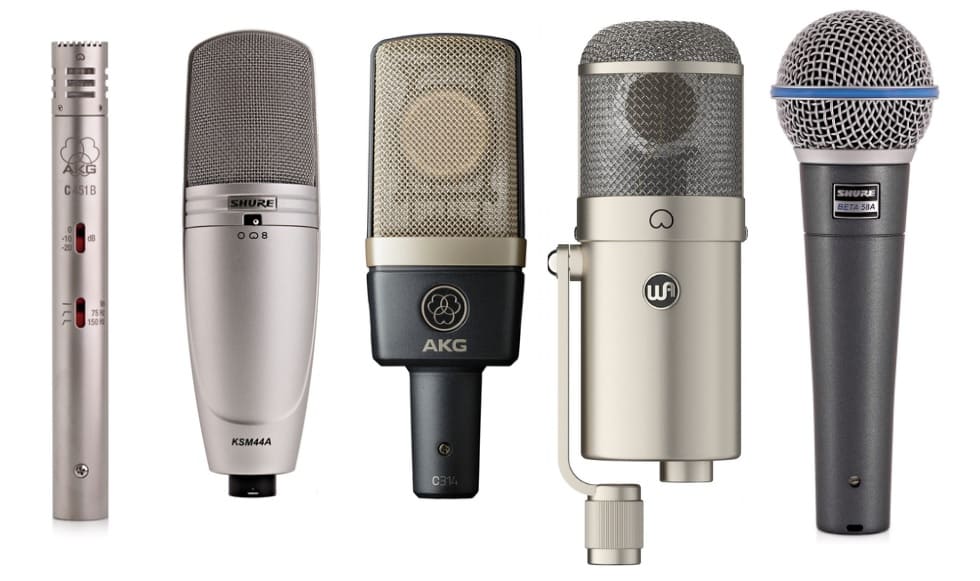
Small diaphragm
The mics with a small diaphragm have a compact design and are easy to position. These types of microphones can handle high sound pressure levels. Among its advantages is the microphone’s dynamic range. Such small diaphragm mics are known as pencil mics and are ideal for capturing the sound of an acoustic guitar.
Medium diaphragm
These hybrid mics combine the characteristics of the mics with a small and large diaphragm. This means that they provide a warm sound while still retaining high-frequency sounds. Such modern microphones can be used in live and recording situations.
Large-diaphragm
You can move these types of mics very easily. They detect differences in the sound pressure level and provide a natural sound. Such mic types are a staple in studios but can be used to record anything from vocals to instruments.
How to choose the right microphone
The first thing to do is determine the reason you need the microphone for. For voice recording, a large-diaphragm condenser microphone might be an option.
If you want to get a mic for a podcast, you can go for a USB condenser mic. For live vocals, you can opt for a cardioid dynamic type of microphone, whereas wireless mics are also an option if you dance. The selection needs to be based on whether you will record vocal recordings or record instruments such as strings and guitars.
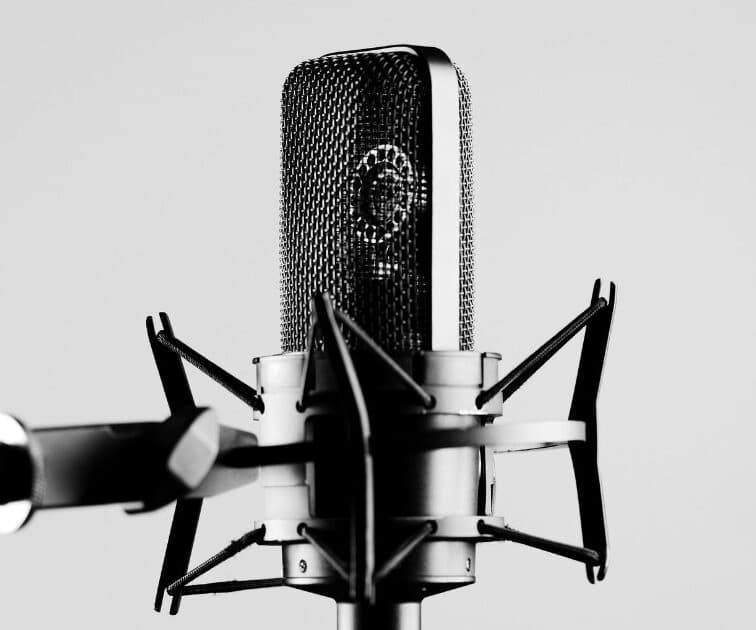
For low-end instruments, you will need a low-end dynamic microphone. Among the factors and key differences to consider are the different frequencies they capture and the genre of music you are recording, and the price.
Best Type of microphone for vocals - Cardioid Microphone
The SM7b capture sounds in detail and provides smooth vocal delivery. It features a cardioid polar pattern and is very easy to install.
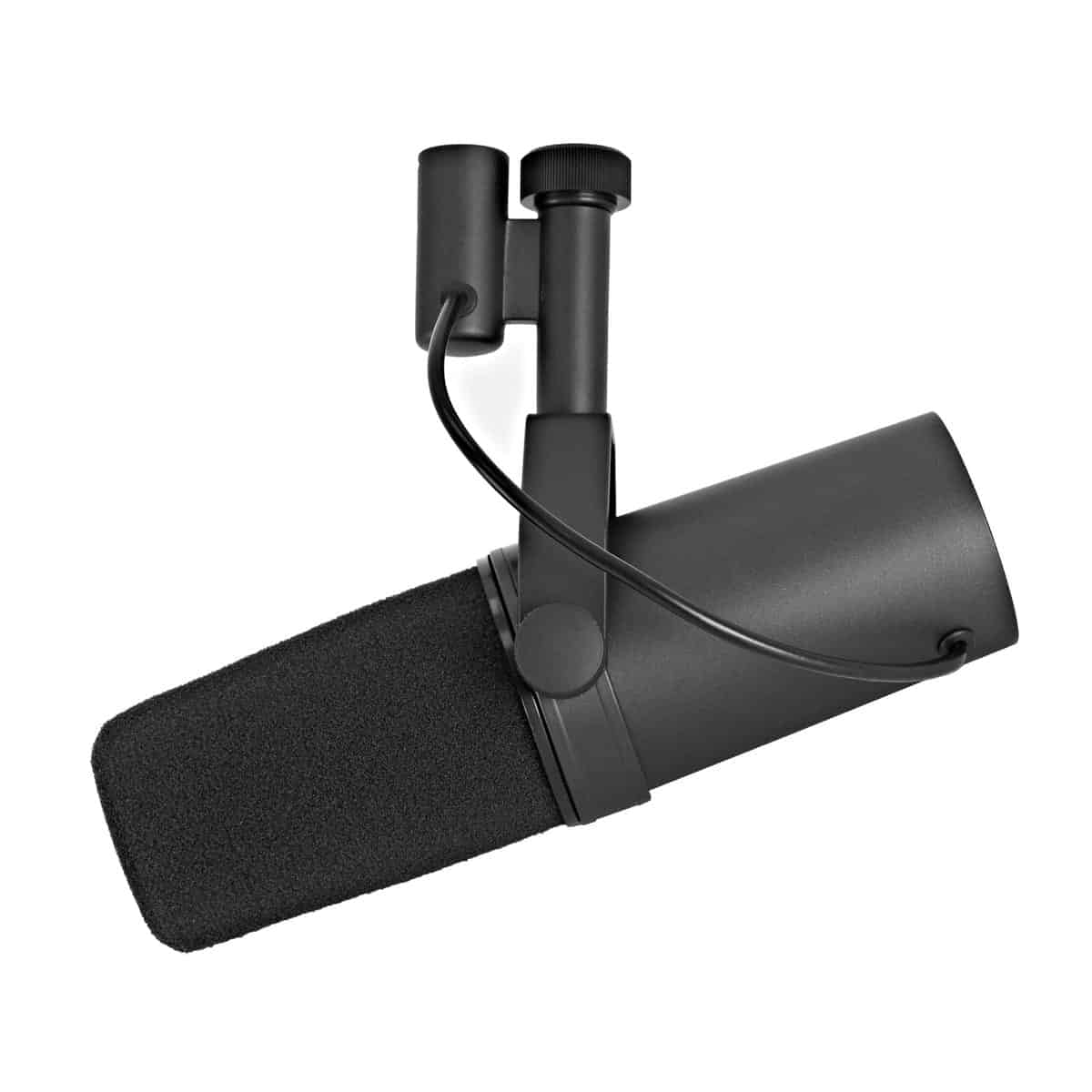
best option for vocals, podcasters and producers
DESIGNED FOR: vocals, guitars, and drums
COMES WITH: It comes with a detachable windscreen
FEATURES: This vocal mic minimizes unwanted noise and is designed to make professional recordings much easier.
Shure SM7B
When you check the price above, you’ll see there are loads of great places to buy this item. Our personal favorite is Gear4music.
It is the largest music retailer in the UK and fast becoming the most respected online music shop in the US too. Their customer service is excellent, they have competitive prices, really fast shipping, and usually have the longest guarantee.
Most professional musicians use Gear4music, so there is no reason why you shouldn’t too!
- It has three frequency response settings
- Provides warm and clear sound
- The mic can be pricy for some users
The professional musician who wrote this article combined many things,
from the product build, manufacturer’s reputation through to feedback
from other users, to create our famous TedScore™.
Best type of microphone for a guitar cardioid or hyper cardioid dynamic mics
It is great for acoustic guitars, vocals, and other loud sound sources. The compact mic allows vocals to cut through the mix, and as a result, the vocals have an increased presence and clarity.
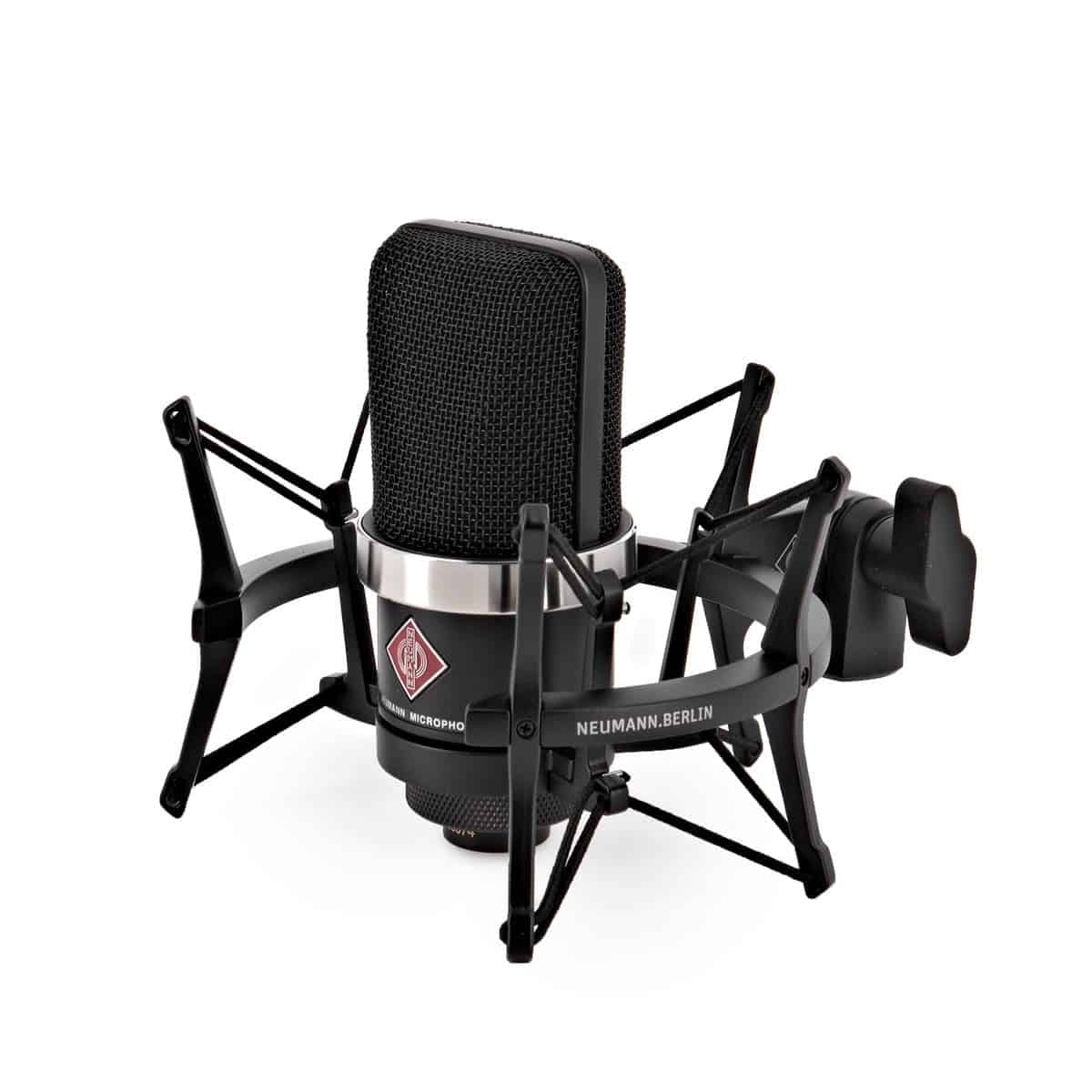
Best option for recording guitar and vocals
DESIGNED FOR: live performances and recording sessions
COMES WITH: EA 4 elastic suspension mount
FEATURES: The mic features a cardioid polar pattern and can withstand high SPLs.
Neumann TLM-102 Microphone
When you check the price above, you’ll see there are loads of great places to buy this item. Our personal favorite is Gear4music.
It is the largest music retailer in the UK and fast becoming the most respected online music shop in the US too. Their customer service is excellent, they have competitive prices, really fast shipping, and usually have the longest guarantee.
Most professional musicians use Gear4music, so there is no reason why you shouldn’t too!
- Offers excellent sound quality
- The mic has a compact design
- No storage case
The professional musician who wrote this article combined many things,
from the product build, manufacturer’s reputation through to feedback
from other users, to create our famous TedScore™.
Best type of mic for strings - Condenser mics
It has a 20 Hz to 20 kHz frequency response and records sounds with incredible quality. SM81 has a compact design and provides flexibility when recording loud sound sources.
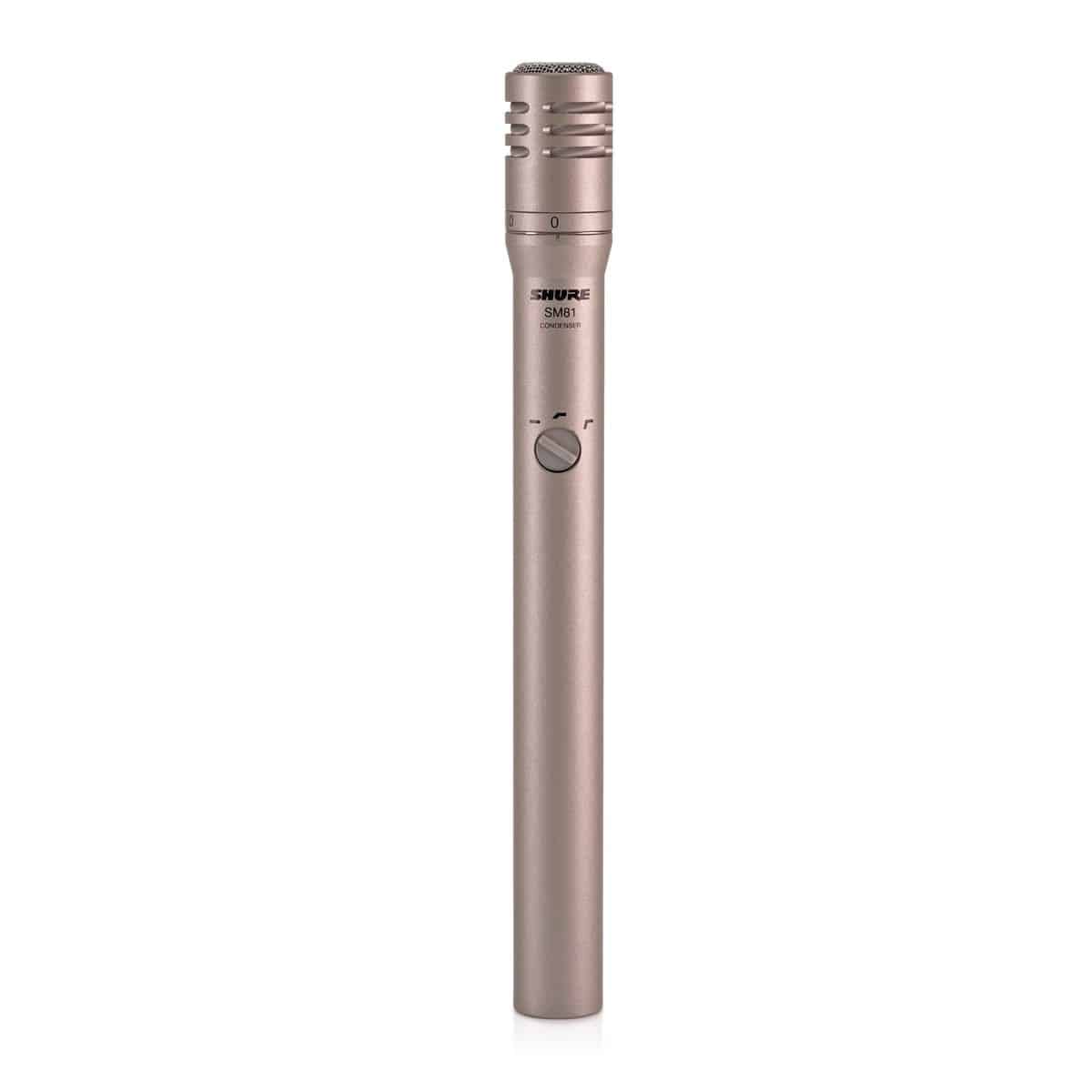
Best option for acoustic string instruments
DESIGNED FOR: professional musicians and sound engineers
COMES WITH: Windscreen, microphone clip and carry case
FEATURES: The mic records detailed acoustic instruments with precision and offers clear sound.
SM81 Microphone
When you check the price above, you’ll see there are loads of great places to buy this item. Our personal favorite is Gear4music.
It is the largest music retailer in the UK and fast becoming the most respected online music shop in the US too. Their customer service is excellent, they have competitive prices, really fast shipping, and usually have the longest guarantee.
Most professional musicians use Gear4music, so there is no reason why you shouldn’t too!
- Well-defined low-end sounds
- The mic is very versatile
- Not intended to be held in hands
The professional musician who wrote this article combined many things,
from the product build, manufacturer’s reputation through to feedback
from other users, to create our famous TedScore™.
Best type of microphone for piano
Due to their frequency range, condenser mics are the best types of mics for pianos.
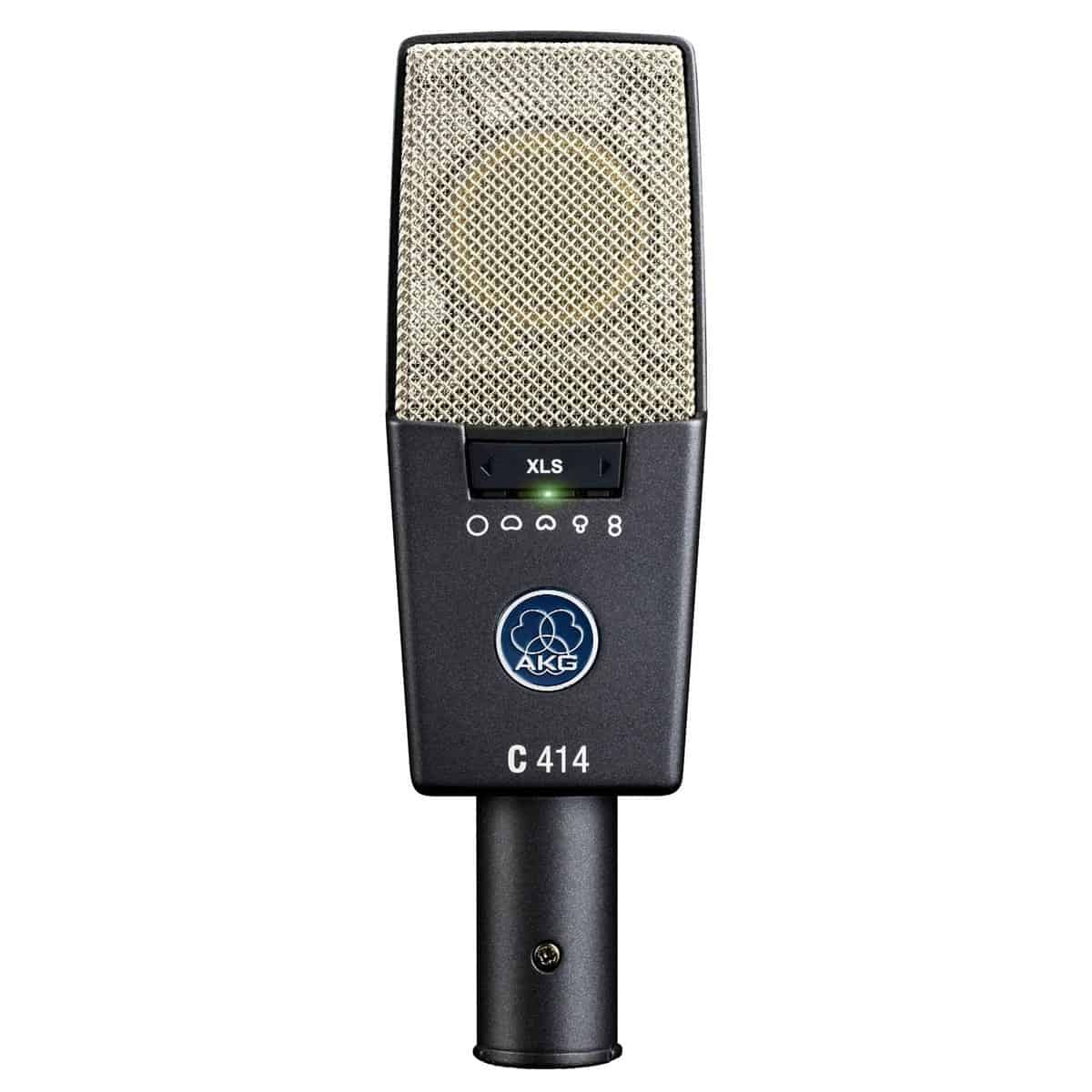
Best for acoustic piano
DESIGNED FOR: live and studio applications
COMES WITH: Sturdy metal case
FEATURES: The mic provides a neutral sound and allows you to choose from five polar patterns.
AKG C414 XLS
When you check the price above, you’ll see there are loads of great places to buy this item. Our personal favorite is Gear4music.
It is the largest music retailer in the UK and fast becoming the most respected online music shop in the US too. Their customer service is excellent, they have competitive prices, really fast shipping, and usually have the longest guarantee.
Most professional musicians use Gear4music, so there is no reason why you shouldn’t too!
- Great sound quality for live and studio applications
- There are nine polar patterns
- The mic has the old-school switch for the patterns
The professional musician who wrote this article combined many things,
from the product build, manufacturer’s reputation through to feedback
from other users, to create our famous TedScore™.
Best type of microphone for drums - Dynamic mics
Aside from the kick drum, Shure SM57 is the best dynamic mic for snare drums.
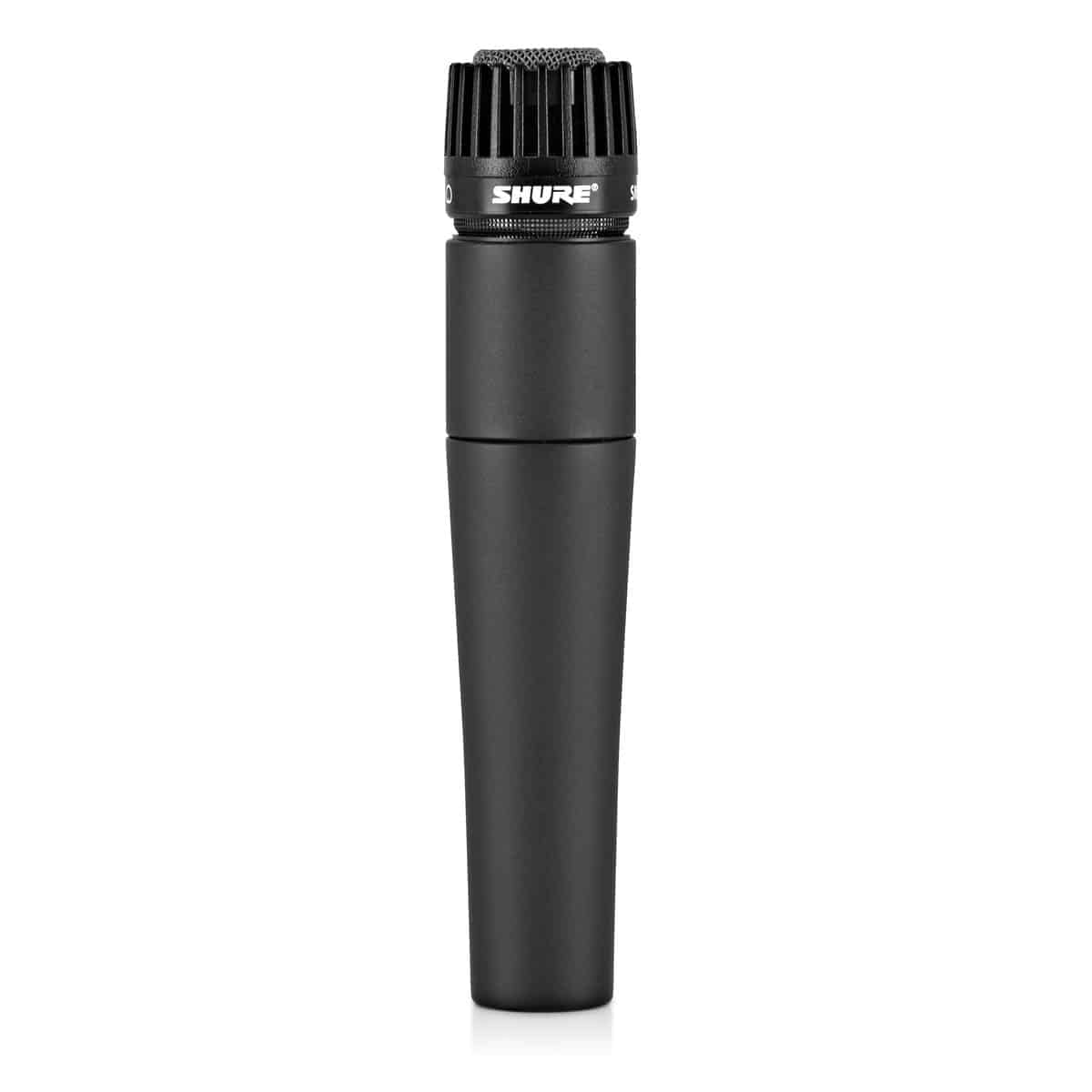
Best for drums, horns and amps
DESIGNED FOR: live and studio recording
COMES WITH: standard mic clip
FEATURES: The cardioid mic compliments most instruments, rejecting background noise and providing clear sound.
Shure SM57
When you check the price above, you’ll see there are loads of great places to buy this item. Our personal favorite is Gear4music.
It is the largest music retailer in the UK and fast becoming the most respected online music shop in the US too. Their customer service is excellent, they have competitive prices, really fast shipping, and usually have the longest guarantee.
Most professional musicians use Gear4music, so there is no reason why you shouldn’t too!
- High quality for a long lifespan
- Quite effective in blocking background sounds
- Possible low gain
- Little bassy
The professional musician who wrote this article combined many things,
from the product build, manufacturer’s reputation through to feedback
from other users, to create our famous TedScore™.
Other Types of microphones
Headworn microphones
The head-worn microphones allow you to move without any restrictions. They have evolved into miniature microphones that convert human sound into electrically transmitted signals. Typically used on stage.
USB microphones
The USB microphones are designed for home studio recording, streaming, podcasting, and musicians on the go.
Accessories for microphones
The accessories for mics include microphone clips, shock mounts, windscreens, pop and reflection filters, and others. The most common accessory is a mic stand, and the one we recommend is the Quiklok A514 Heavy Duty Telescopic Boom Microphone Stand.
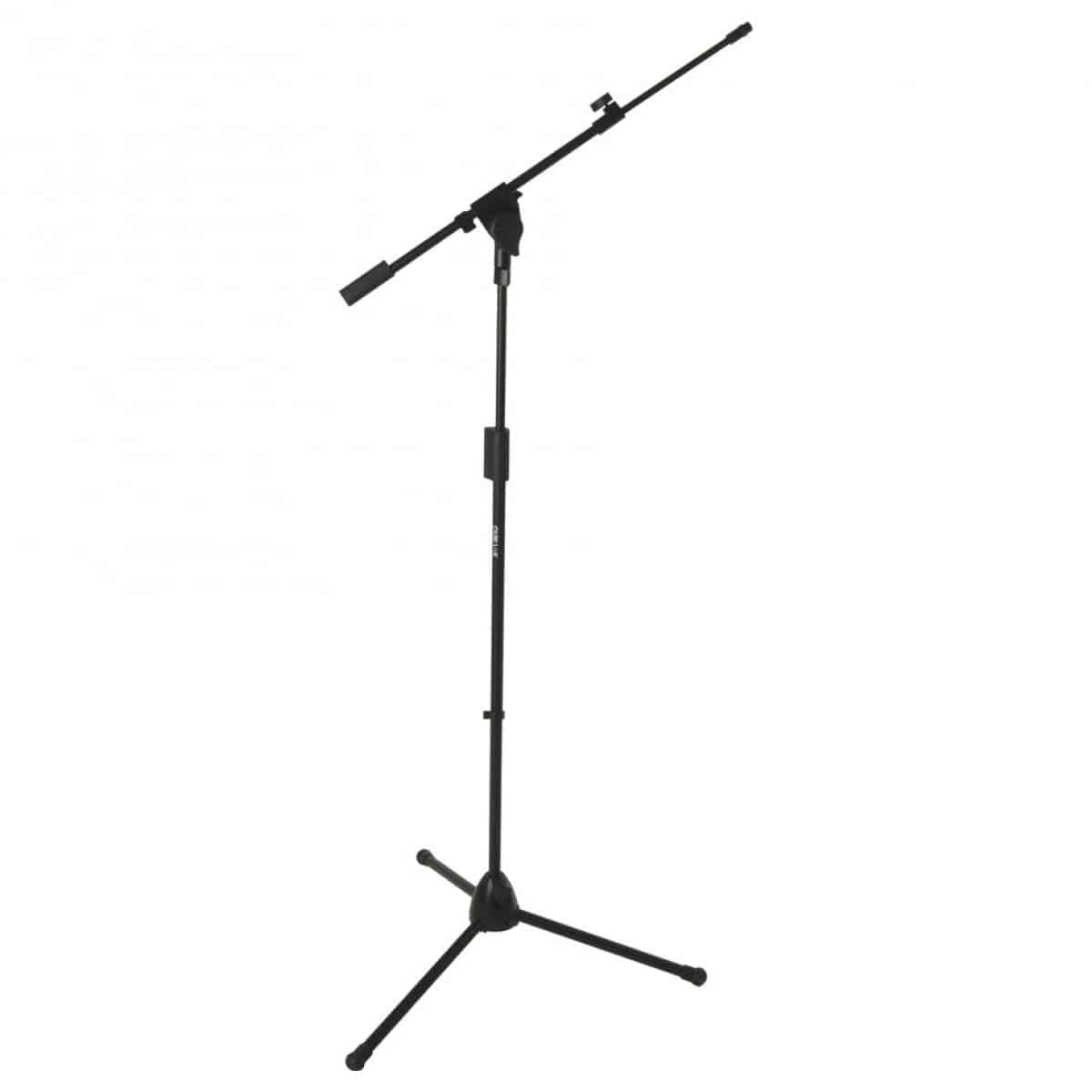
DESIGNED FOR: a microphone that needs a sturdy stand
FEATURES: Heavy-duty design with steel tubing Adjustable boom length of 53cm to 91cm
Quiklok A514 Heavy Duty Telescopic Boom Microphone Stand
When you check the price above, you’ll see there are loads of great places to buy this item. Our personal favorite is Gear4music.
It is the largest music retailer in the UK and fast becoming the most respected online music shop in the US too. Their customer service is excellent, they have competitive prices, really fast shipping, and usually have the longest guarantee.
Most professional musicians use Gear4music, so there is no reason why you shouldn’t too!
- Three-leg tripod base and innovative locking system
- Robust construction and sleek black finish for a professional aesthetic
- A little pricey - but worth it!
The professional musician who wrote this article combined many things,
from the product build, manufacturer’s reputation through to feedback
from other users, to create our famous TedScore™.
Types of microphones
Summary
As we wrap up our chat about the list of microphones, I’ve realized the wide range of mics available, each suited for different audio adventures. I favor dynamic mics for their toughness; they are great for live shows or lively podcasts.
Regarding delicate vocal recordings or capturing the nuances of an acoustic guitar, I lean toward condenser mics. Ribbon mics have a vintage appeal, offering a warm and classic sound, while lapel mics are discreet favorites for broadcasters and presenters.
In summary:
- Dynamic mics for durability and live sound.
- Condensers for studio finesse.
- Ribbon mics for timeless warmth.
Remember, the right mic depends on the context and the sound source. Whether you’re a budding podcaster or an experienced musician, matching your mic with your mission is essential.
After all, the combination of the right tool and your unique voice creates audio magic. Cheers to that!
FAQ's
The mic categories are dynamic, large diaphragm condenser, small diaphragm condenser, and ribbon microphones.
Regarding pick-up patterns, the mics can be cardioid, super/hyper-cardioid, omnidirectional, figure-8, shotgun, and switchable.
According to their design, there are dynamic, condenser (large and small diaphragm condensers and ribbon mics.
Microphones are devices that capture sound waves in the air and transform them into electrical signals. There are several microphone types, all of which have different specifications.


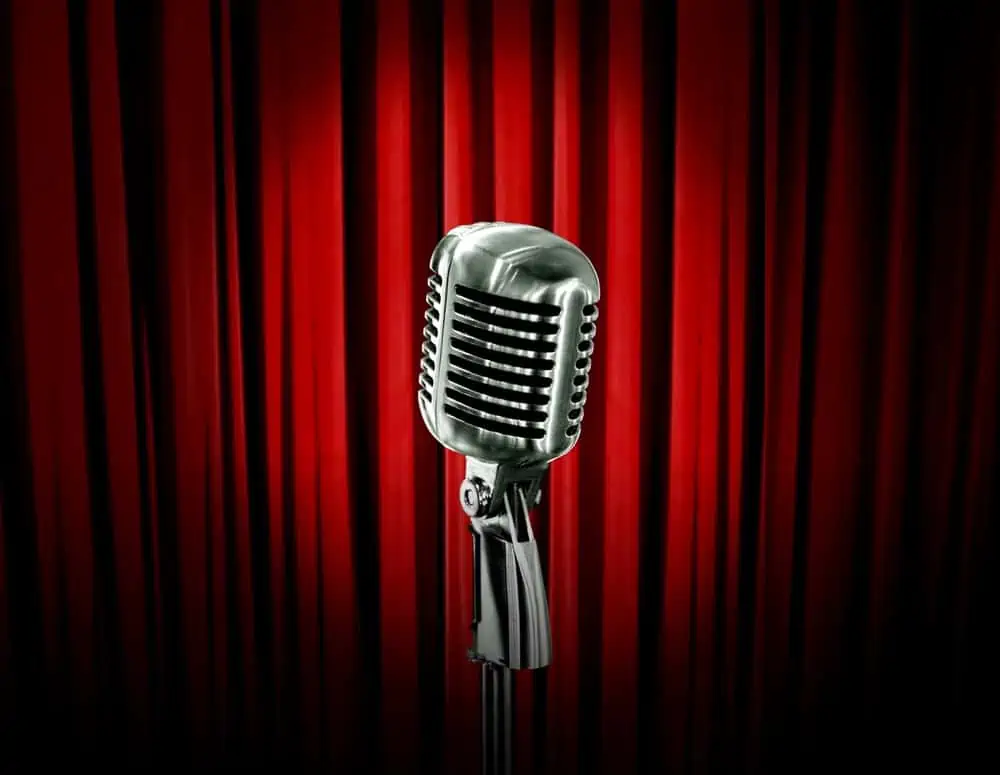









While the article provides a comprehensive overview, I noticed a minor discrepancy in the specifications for ribbon microphones. According to most current engineering guidelines, ribbon mics generally have a figure-8 pattern as their default, not just as an option. It’d be beneficial for readers seeking accuracy in technical details to have this clarified. Additionally, exploring the impact of impedance on performance could enhance the discussion, particularly for those integrating these microphones into pre-existing setups.
Neumann’s cool and all, but anyone serious about recording guitars needs to consider a good dynamic mic too. I mean, where’s the love for the classics like SM57, huh? You can’t just overlook the legends, especially for those crunchy electric riffs.
Really appreciated the section on microphones for vocals. I’ve been on the fence about investing in a good mic, and your insight on the Shure SM7B has made the decision easier. Thanks for the valuable information.
you won’t regret the SM7B, Becca. solid choice.
Hey Hugh Richardson, got a question. D’you think the Neumann TLM-102 could handle live sessions as well as studio for guitar? Cheers.